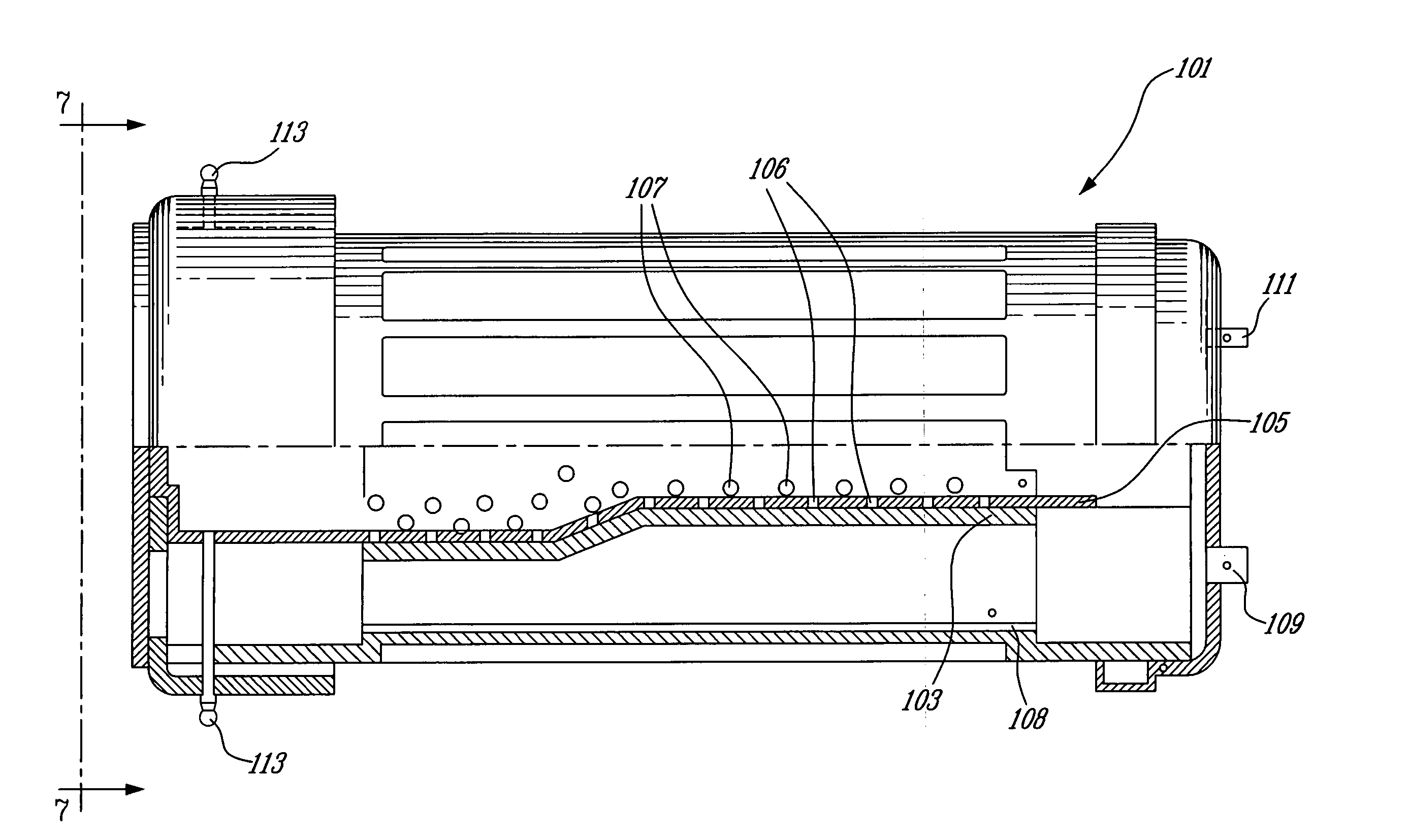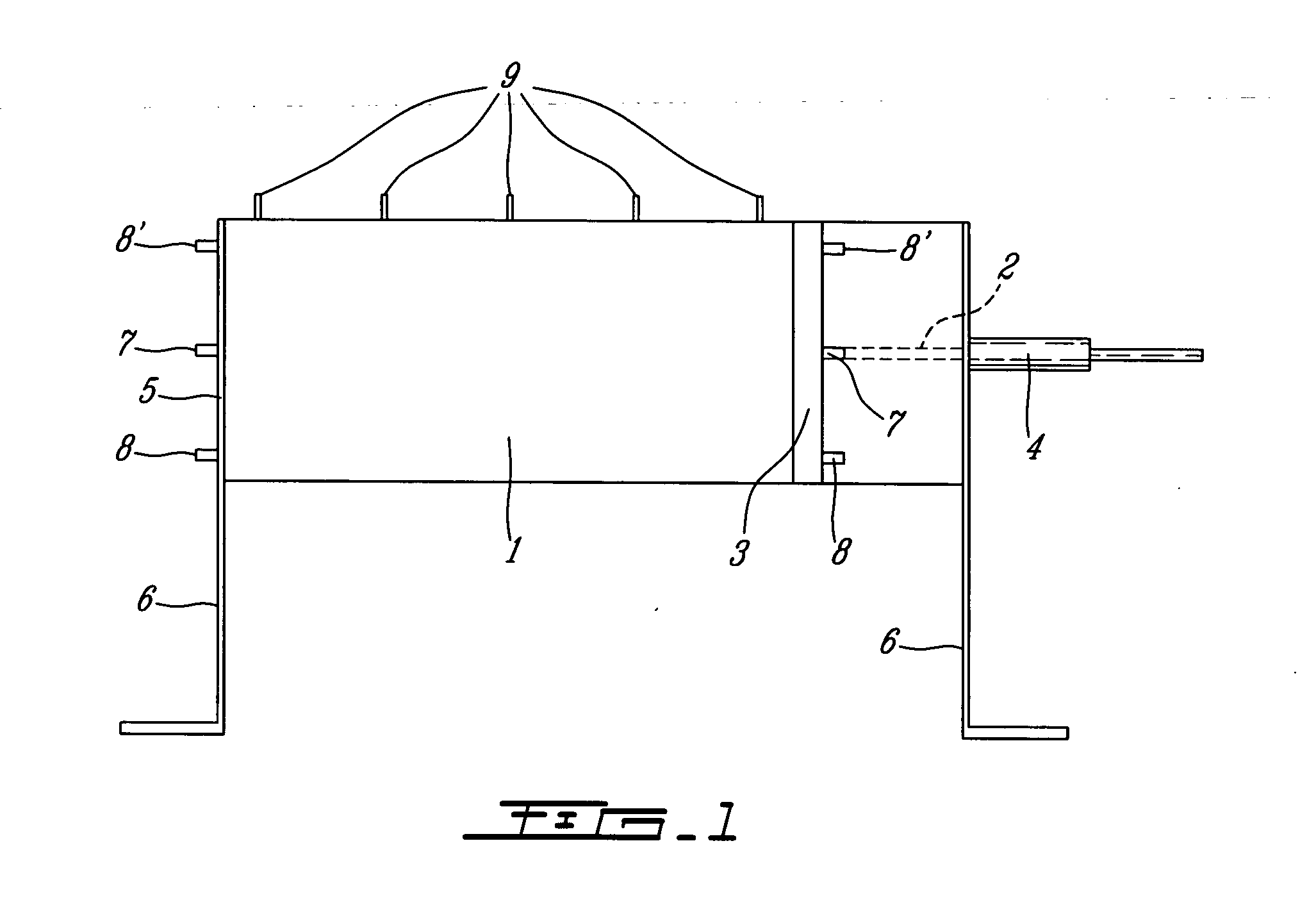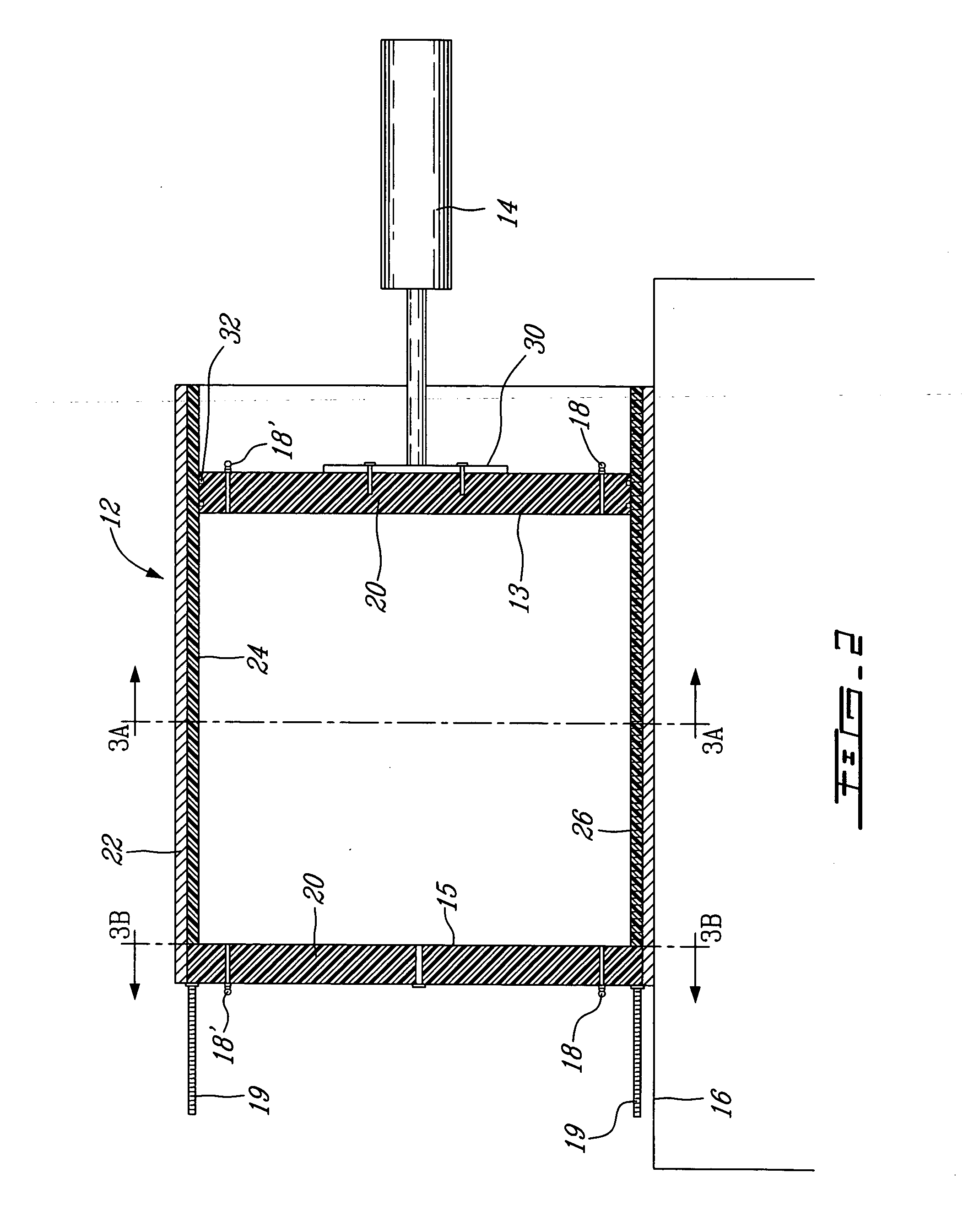Process and apparatus for treating sludge by the combined action of electro-osmosis and pressure
a technology of electro-osmosis and pressure, applied in the field of sludge treatment, can solve the problems of electro-osmosis techniques, drop of potential at the anode, etc., and achieve the effects of facilitating filtration of sludge, reducing the distance water has to travel before exiting the apparatus, and facilitating dehydration of sludg
- Summary
- Abstract
- Description
- Claims
- Application Information
AI Technical Summary
Benefits of technology
Problems solved by technology
Method used
Image
Examples
example 1
[0054] An agro-alimentary sludge obtained from the meat processing has been treated using a process and an apparatus according to the present invention. This sludge had an electrical resistivity of 238 Ωcm. The sludge has been introduced in a chamber having a controlled humidity in order to reduce the drying process of the sludge since the room temperature could be between 20 and 25° C. The sludge has been introduced in the cell in 5 different layers of 3 cm each.: These layers have been compacted by a plunger of about 200 g in order to diminish void spaces and to have certain uniformity between each layer. Then, the piston and the cover have been installed and the sludge has been submitted to an electrical current. The pressure applied to the sludge had an average of 13 kPa. At the beginning of the treatment, the pressure was about 2 to 3 kPa and it has been increased until the pressure of 50 kPa was obtained.
[0055] A voltage gradient of about 0.5 Volts / cm was applied at the begin...
example 2
[0057] Another agro-alimentary sludge similar to the one described in Example 1 has been treated in the same manner than the previous one. This sludge had an electrical resistivity of 244 Ωcm. After 24 hours in a stock room having a temperature of 13° C. and a humidity of 90%, the sludge has been introduced in the cell as described in example 1, and having a volume of 1000 mL. The voltage of 8.5 Volts has been applied during 6 hours and the voltage gradient was of 0.5 Volt / cm. The volume of drained effluents was 466 mL. The dryness of the sludge before treatment was 10% and 25.3% after the treatment.
example 3
[0058] Another agro-alimentary sludge as described in example 2 has also been treated. In this example, the sludge was stored for 1 week. This sludge had an electrical resistivity of 290 Ωcm. All the conditions of the treatment were the same as described in example 1. The volume of the sludge was 1 L. The volume of drained effluents was 280 mL. The dryness of the sludge before treatment was 9%, and 25% after the treatment.
PUM
| Property | Measurement | Unit |
|---|---|---|
| Pressure | aaaaa | aaaaa |
| Pressure | aaaaa | aaaaa |
| Pressure | aaaaa | aaaaa |
Abstract
Description
Claims
Application Information
 Login to View More
Login to View More - R&D
- Intellectual Property
- Life Sciences
- Materials
- Tech Scout
- Unparalleled Data Quality
- Higher Quality Content
- 60% Fewer Hallucinations
Browse by: Latest US Patents, China's latest patents, Technical Efficacy Thesaurus, Application Domain, Technology Topic, Popular Technical Reports.
© 2025 PatSnap. All rights reserved.Legal|Privacy policy|Modern Slavery Act Transparency Statement|Sitemap|About US| Contact US: help@patsnap.com



